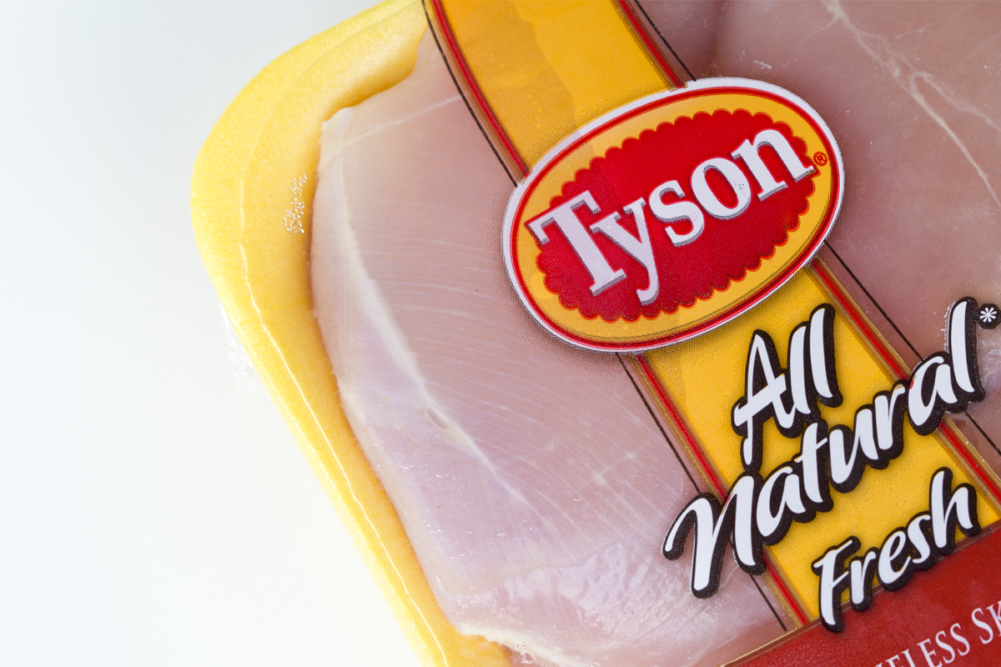SPRINGDALE, ARK. – A goal of Donnie King’s when he took over as president and chief executive officer of Tyson Foods, Inc. less than a year ago was to improve the performance of the company’s Chicken business unit. Based on Tyson Foods’ second-quarter results, he’s making progress.
“Chicken remained a bright spot, where volume was up 2.1% through the first half compared to the same period last year,” Mr. King said during a May 9 conference call to discuss quarterly results. “This improvement was driven by solid fundamental demand as well as operational improvements. There is much more work to be done as we focus on filling our existing capacity. We are pulling multiple levers to drive sequential improvement in our performance. And as a result, I’m confident that we will see continued volume performance in the second half.”
For the second quarter ended April 2, Tyson Foods earned $829 million, equal to $2.28 per share on the common stock, and an improvement over the same period of the previous year when the company earned $476 million, equal to $1.30 per share.
Quarterly sales rose to $13.1 billion from $11.3 billion in fiscal 2021.
“This quarter, we delivered share gains in bacon, hotdogs and snacking,” Mr. King said. “We also continue to see recovery in the foodservice channel with our relative strength in QSRs and K-12, supporting continued share gains in branded value-added chicken. Overall, consumer demand for protein has remained strong, and we are taking deliberate actions by segment to improve our volumes to better meet customer needs, including investing in new capacity, brands, product innovation and our team member experience.”
Tyson Foods’ Beef business unit, its largest, had sales of $5 billion during the quarter, up from $4 billion the year prior. The unit’s operating income rose to $638 million from $445 million.
“In Beef, volumes were down 2.9% in the first half compared to the same period last year,” Mr. King said. “However, Beef volumes increased quarter-over-quarter due to higher harvest weights. We expect continued volume improvements for the remainder of our fiscal year ‘22 as new team member recruitment strategies support an improved labor position and higher throughput.”
Mr. King added that specialty products such as fat and tallow from the Beef unit are underpinning profitability.
“We’re able to take a lot of that product, and with the price of diesel and fuels, we’re able to … get some really great value out of those products, and that’s providing some tailwinds for us in our Beef business,” he said.
Chicken unit sales rose to $4 billion from $3.5 billion in 2021, and operating income rose to $198 million from just $6 million the year before.
“Volumes improved in the quarter due to strong consumer demand and operational improvements,” said Stewart F. Glendinning, chief financial officer. “Our teams have been focused on streamlining our plants to deliver higher volumes. We expect to deliver further volume improvements in the second half of fiscal 2022 as harvest numbers improve and we continue to optimize the operational efficiency of our plants.”
Prepared Foods sales rose to $2.4 billion from $2.2 billion, and operating income was $263 million, up from $217 million in 2021.
“Total (Prepared Foods) volume was down in the quarter given labor and supply chain challenges and uneven foodservice recovery and the sale of our pet treats business,” Mr. Glendinning said. “Sales growth outpaced volume growth driven by higher average sales price.
“Consumer demand has remained durable even as we’ve worked to manage inflation through price increases. Overall, consumer response to higher price levels is below historical expectations as our brand strength and category relevance has enabled continuing strong demand.”
While Pork unit sales rose to $1.6 billion from $1.5 billion its operating income fell to $59 million from $67 million.
“In Pork, impacts associated with a challenging labor environment contributed to a 2.3% decline in volume in the first half compared to the same period last year,” Mr. King said. “We expect tightness in live hog inventories to affect our second-half volume.”
Mr. Glendinning added that Pork’s operating income deterioration was driven by softer exports and higher input costs as well as labor challenges.
For the first six months of fiscal 2022, Tyson Foods’ net income was $2 billion, or $5.35 per share, and up from $943 million, or $2.58 per share, during the same period of the previous year.
First-half sales surged to $26.1 billion from $21.8 billion the year before.
“Based on the strong first-half results, we’re raising our total company sales guidance to a range of $52 billion to $54 billion,” Mr. Glendinning said. “In support of our sales growth, we now expect 1% to 2% volume growth on a year-over-year basis as we work to optimize our existing footprint and run our plants full.”
